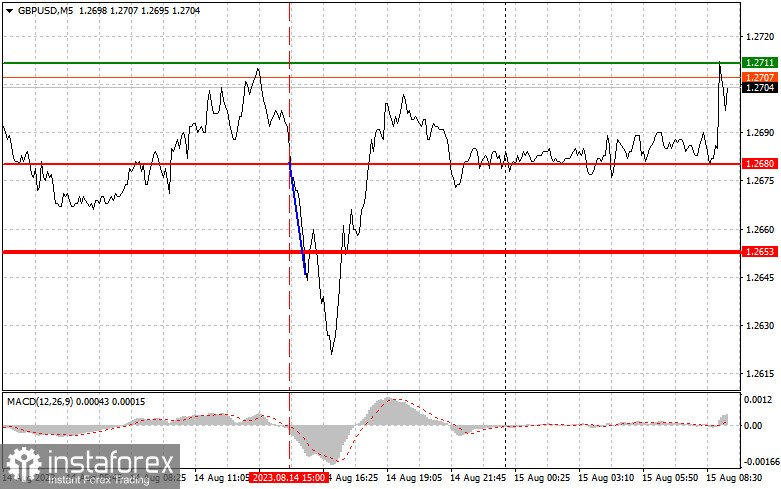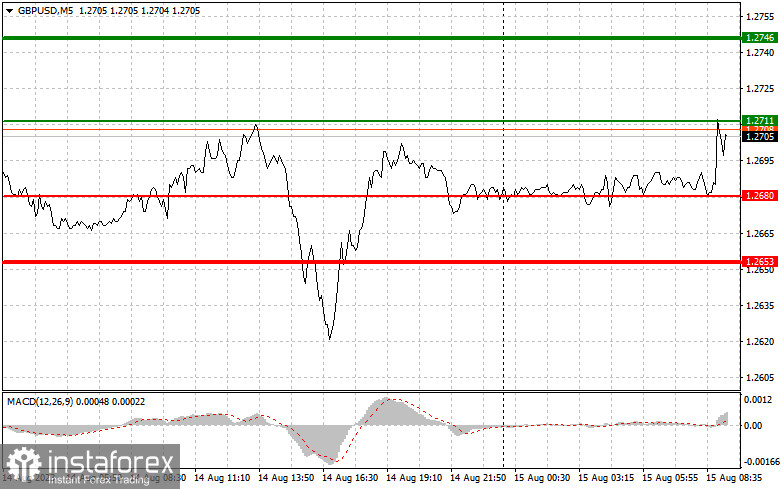Analysis of transactions and tips for trading GBP/USD
The test of 1.2680 on Monday afternoon, coinciding with the decline of the MACD line from zero, prompted a sell signal that led to a price decrease towards 1.2650.
Strong UK data came out, but market reaction varied. The sharp increase in jobless claims and rise in the unemployment rate led to sell-offs in pound, while the increase in average earnings, which will undoubtedly affect inflation, triggered purchases, as it may convince the Bank of England to continue raising interest rates.

For long positions:
Buy when pound hits 1.2711 (green line on the chart) and take profit at the price of 1.2746 (thicker green line on the chart). Growth will occur depending on the statistics about the inflationary pressure in the UK. However, when buying, ensure that the MACD line lies above zero or rises from it.
Pound can also be bought after two consecutive price tests of 1.2680, but the MACD line should be in the oversold area as only by that will the market reverse to 1.2711 and 1.2746.
For short positions:
Sell when pound reaches 1.2680 (red line on the chart) and take profit at the price of 1.2653. Pressure may return in the afternoon. However, when selling, ensure that the MACD line lies below zero or drops down from it.
Pound can also be sold after two consecutive price tests of 1.2711, but the MACD line should be in the overbought area as only by that will the market reverse to 1.2680 and 1.2653.

What's on the chart:
Thin green line - entry price at which you can buy GBP/USD
Thick green line - estimated price where you can set Take-Profit (TP) or manually fix profits, as further growth above this level is unlikely.
Thin red line - entry price at which you can sell GBP/USD
Thick red line - estimated price where you can set Take-Profit (TP) or manually fix profits, as further decline below this level is unlikely.
MACD line- it is important to be guided by overbought and oversold areas when entering the market
Important: Novice traders need to be very careful when making decisions about entering the market. Before the release of important reports, it is best to stay out of the market to avoid being caught in sharp fluctuations in the rate. If you decide to trade during the release of news, then always place stop orders to minimize losses. Without placing stop orders, you can very quickly lose your entire deposit, especially if you do not use money management and trade large volumes.
And remember that for successful trading, you need to have a clear trading plan. Spontaneous trading decision based on the current market situation is an inherently losing strategy for an intraday trader.





















